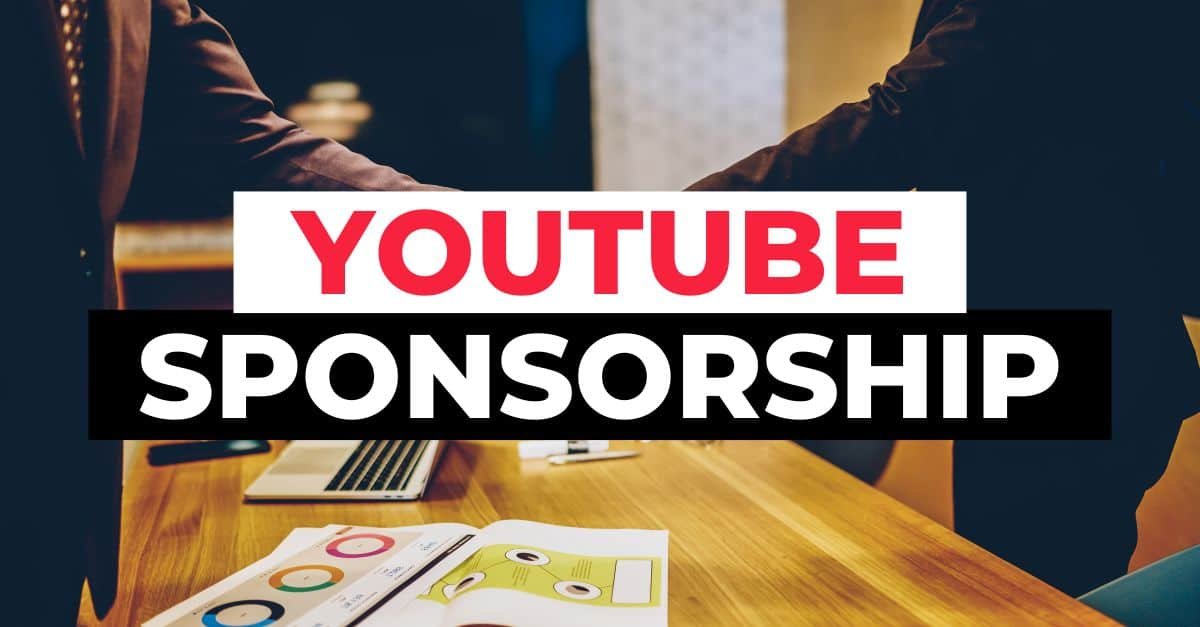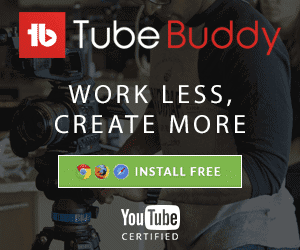With the surge of online content creators, it’s not unusual to start thinking about a career as a YouTuber. But making money off your videos isn’t as easy as recording and uploading.
Instead, most creators get most of their money through sponsorships. But how do you get sponsored on YouTube?
Here’s how to get sponsored on YouTube:
- Build a YouTube brand or persona
- Create quality YouTube content
- Follow YouTube’s Community Guidelines
- Sign up for sponsorship programs
- Reach out to your favorite brands
- Make your YouTube channel more popular

1. Build A YouTube Brand Or Persona
Setting up your YouTube channel is an exciting step that may launch you into cyber stardom. But when you’re coming up with a username and filling out your account details, you’ll also need to consider your niche.
Your niche will help you figure out what kind of video content you create, your audience, and what type of sponsorships you get.
So, whether it’s prank videos, vlogging content, or gaming videos, you should clearly know what content you want to make. Your content should also reflect this idea so that users who click on your channel know precisely what your videos are about.
Secondly, you’ll need to create a persona or brand. Your persona is who you are and will help your audience and potential sponsors identify and relate to you. Sponsors generally want to work with creators who share the same beliefs and values that their brand stands for.
Lastly, building a brand helps to create brand awareness. It would help if you had quality thumbnails with a specific art style.
Your video titles should also reflect your brand’s personality. When your brand is easily recognizable by audiences, you’ll build a loyal follower base.
The more followers you have that are actively engaging with your content, the more likely it will be that sponsors will want to work with you and be associated with your brand.
2. Create Quality YouTube Content
Sponsors want to work with channels that create quality content. Videos that are entertaining, popular, and filled with helpful content are more likely to catch the eye of sponsors, so make sure you’re only uploading videos that are considered high-quality.
Quality content also helps to draw in more users and build a bigger platform, which will gain the interest of sponsors. More sponsors will want to work with you when your channel grows steadily.
You’ll want to look to your top-rated competitors to determine what content is considered high-quality.
For example, suppose you’re trying to enter the gaming niche. In that case, you’ll want to look at YouTubers like Markiplier, Jacksepticeye, and Pewdiepie.
Look at the type of content they’re coming out with, and try to match it. Is a new game on the market that they’re making videos about?
How many views is each of their videos averaging? These are essential questions for any creator to ask themself when they’re just starting and want to get a leg up on other smaller creators.
Quality isn’t all about what’s in your videos, though. It’s also about your equipment. Because most people watch YouTube on their laptops or smartphones, they’ll want to watch something with a higher-quality definition.
Similarly, they’ll want to be able to hear you. So, investing in the right equipment, like microphones and laptops, is just as important as making quality videos.

3. Follow YouTube’s Community Guidelines
YouTube has strict rules and regulations to keep its users safe and engaged. These guidelines outline what content creators can and cannot do on their channels. When creators ignore these rules, their channel may be in danger of being removed or demonetized.
YouTube’s Community Guidelines cover everything from the type of content accepted on the platform to engagement, safety, and fairness.
Any creators violating these rules may get a strike against their channel and be unable to monetize their content, and in extreme cases, their channels may be deleted.
When a channel goes against these guidelines, they’re generally not doing things sponsors like and want to be associated with either.
This makes landing and maintaining sponsors much more difficult.
4. Sign Up For Sponsorship Programs
Creators can use several sponsorship programs and websites to launch their channel into the sponsorship spotlight. These include sites like Scrunch and Artbrief, but the most popular sponsorship program is YouTube’s BrandConnect site.
YouTube BrandConnect helps to connect content creators and sought-after sponsors, provided the creators stick to their rules.
When your channel is up and running, you’ll need to monitor your engagement metrics closely.
This will help you to figure out how many views and likes you’re getting, your audience demographics, and what videos are most popular on your channel.
You can steadily grow your subscriber base by doubling down on your most popular videos and focusing your content on being more suited to your existing audience.
Knowing these metrics will also help you to connect with brands and companies that fit your niche and that your audience will like. After all, you won’t want to couple up with a sponsor your audience won’t enjoy.
BrandConnect carefully selects top sponsors for content creators and can help you to get sponsored.
They will help to connect you with brands provided you are already part of the YouTube Partner Program, over eighteen, live in the UK, US, or Canada, and have no Community Guideline violations.
5. Reach Out To Your Favorite Brands

Reaching out to your favorite brands can also help to connect you with potential sponsors who would like your content. It’s important to contact sponsors that make sense and that align with your channel’s brand.
For example, content creators that stream and upload gameplay videos may want to reach out to the most popular gaming brands. Similarly, beauty vloggers may want to couple up with their favorite makeup or skincare brands.
When you’re ready, gather the contact details of a few of your ideal sponsorship brands and send them an email with all your channel’s details and a media kit.
Remember to tell them why your channel would be a good fit for them and how you plan to promote their products or services.
Make sure you have a portfolio of your best video content to show potential sponsors. This will help to give them a taste of what you offer and show them how your channel aligns with their brand.
You should also attach links to your social media platforms so they can check out your overall audience engagement.
6. Make Your YouTube Channel More Popular
Sponsors want to work with popular channels, and for a good reason.
Of course, if you only have a handful of subscribers, brands won’t get enough exposure to make their investment in you worthwhile.
So, to get sponsorships, you’ll first need to spend time building up your channel numbers (you don’t need hundreds of thousands of subscribers, I’ve landed a $2500 sponsorship with a channel that had just 600 subscribers before).
You can build a more prominent platform by posting regularly, checking on what your competitor channels are doing, creating similar, popular content, and engaging with your audience as much as possible.
However, the most crucial part of building a following is consistency. Your subscribers will get bored if you post videos sporadically or if you don’t post for long periods.
When you post quality content regularly, your followers will likely be more engaged and subscribe to your content.
In turn, this will earn you even more followers and, eventually, earn you sponsorships.
More sponsorships from trustworthy brands will also boost your follower engagement, giving you even more sponsorship opportunities.

Final Thoughts
While it may seem like a daunting task to get sponsored on YouTube, if you follow these simple tips, you’ll be well on your way.
First and foremost, brands want to partner with channels that have a strong YouTube brand or persona.
So make sure your channel represents you and your values well. Secondly, create high quality content that adheres to YouTube’s Community Guidelines—this is non-negotiable.
Once you’ve done that, sign up for any relevant sponsorship programs and start reaching out to your favorite brands (but don’t forget to do your research first).
Lastly, work on making your channel more popular by focusing on things like SEO, engagement, and building a strong community around your content.
If you keep uploading great videos regularly, eventually someone will take notice.

